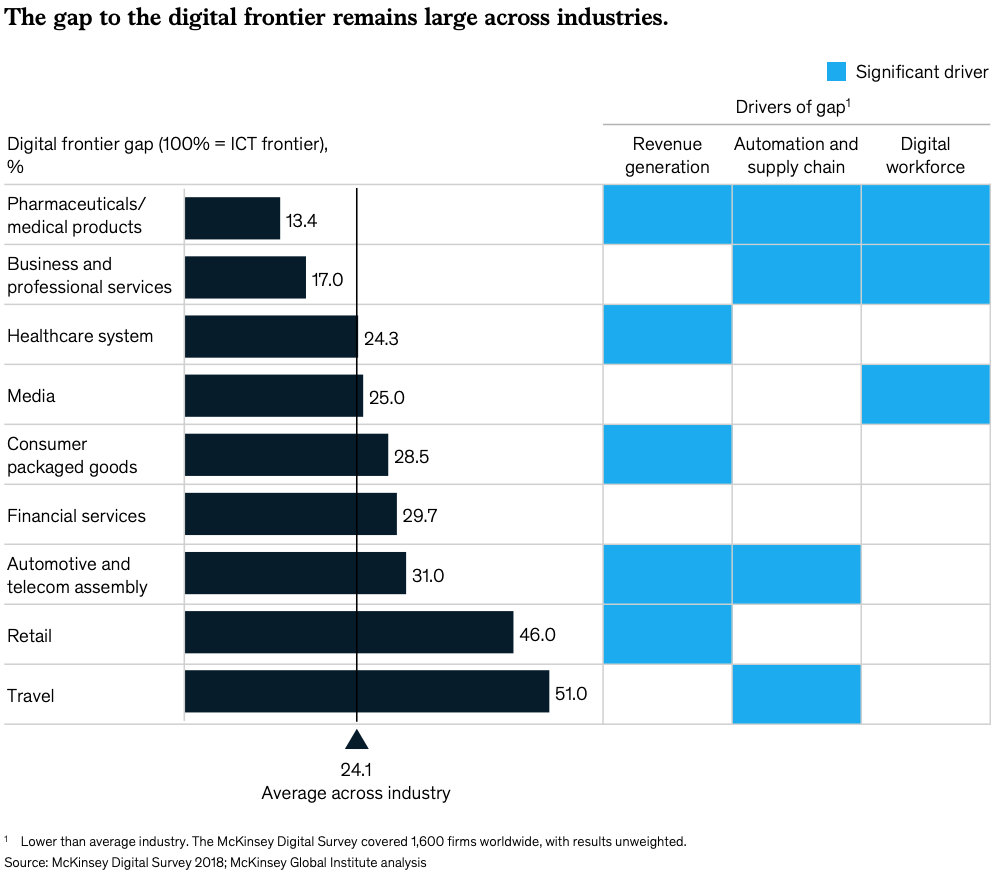What is business analysis?
Modern business analysis is more than just a tool for gaining deeper insights during project development, but also a catalyst for strategic planning and organisational change at the highest levels. Today, business analysis has become a complex research discipline, and the role of the business analyst continues to change and evolve.
So, what is a business analysis and how BA bridges the gap between IT & business?
Understanding Business Analysis in Software Development – Part 1
This article is part 1 in a five-part series about business analysis, business analytics tools and techniques.
The key result is to influence through this practice the success of your product and shorten time to market.
← Understand how to craft your digital product with workshops
How Business Analysis Works in Project Management→
What is business analysis?
Business analysis is the process of finding solutions to business problems by using research, data, and analytical methodologies to identify business needs and areas for improvement in a company’s processes, products and services. As businesses move toward ever wider adoption of digital technology for everything from customer-facing products to internal platforms, infrastructure, supply chain management, and more, many established companies and large enterprises have embraced business analysis as a key process in their shift towards process digitization.
In 2018, the McKinsey Global Institute (MGI) estimated that digitization, automation, and artificial intelligence (AI) could add an additional US$13 trillion to global GDP by 2030. Yet even with staggering advances in technology over the last 25 years, productivity growth has been slow even in developed economies, dropping to an average of 0.5% from 2010-2014 from 2.4% a decade earlier. MGI calls this the “productivity puzzle”, but insists that this puzzle is solvable and that firms are standing on the edge of a major productivity dividend from digitization once companies more effectively implement digital technologies in business workflows at scale.

Business analysis is one of the cutting edge new areas of investigation helping companies to embrace process digitization and close the digital divide in business. But just what is business analysis, what does a business analyst do, and what do the everyday tasks of the analysis process look like? Let’s start by taking a closer look at the analysts’ role, and some of the most popular tools and techniques they bring to the job.
What is a business analyst?
The primary job of a business analyst (or BA, sometimes called a business systems analyst) is engaging with business leaders, management, employees and customers to help improve efficiencies and add value to business processes, internal platforms, products and services. Modern business analysis often has a definite software development component, although business analysts don’t always work directly with software, hardware, or information technology (IT) systems.
Business analysis practitioners might also be a project manager, management consultant, business intelligence analyst, data scientist, or anyone concerned with a strategic analysis of product design, hardware, internal tools, software platforms, customer-facing services or internal business processes. The BA must be able to evaluate and simplify ideas for improvement into an actionable project plan, but also understand how to balance plans against what is functionally reasonable, as well as technologically and financially feasible.
Here is a quick breakdown of the responsibilities of a BA within an organization, according to the (International Institute of Business Analysis (IIBA):
-
Investigate business systems and take a holistic view of the situation, including elements of organizational structures, staff development issues, current processes and IT systems.
-
Evaluate solutions for improving the operation of a business system, which may require examining organizational structures and staffing needs to ensure they are aligned with any proposed redesign of business processes or IT systems.
-
Document business requirements. This includes all the physical materials like pens, post-its, notebooks or loose sheets of paper, as well as the physical space with adequate room to accommodate everyone and all the activities you have planned. There should be a large whiteboard for sticky notes and dry erase markers, and a computer with or without a projector, if someone will be typing notes or displaying media.
The role of business analysis in software development
The role of the BA in software development is shifting as developers pivot to Agile and other fast-paced, more iterative frameworks. In traditional Waterfall development, a BA was more involved during pre-production, documenting user and engineering requirements, then moving on to a different project once their task was complete. In Agile software development, BA’s tend to stay with single projects through production, testing and release, even multiple releases, documenting requirements for regulatory compliance, tracking user responses and how they intersect with different areas of the company’s business.
How does business analysis work?
The term “business analysis” can be applied to a wide variety of roles, tasks and processes, but business analysts are often found working within the realm of project management. Having a BA involved to provide insights and assistance at every stage of the project life cycle is ideal. He or she can help reconcile any potential issues, risks or pitfalls associated with the project as it intersects with other areas of the company’s business, such as sales, supply chain management, or customer service. Here are six fundamental stages of project development where business analysis adds value:
The Idea
Validate the initial idea of the project, answering questions like: why is this a good idea? Does it help to solve a specific problem? How should we approach the solution?
Business Model
Evaluate potential customer demand, who or what is your competition, what channels of distribution are accessible and/or feasible, and the risksassociated with applying the solution, financial or otherwise.
Product
Create a detailed description of the product, including the overall vision, user personas and user journeys for regular usage of the application, a list of all the features the application should have, and a product backlog of prioritized user stories.
Technology
Define the tech stack required to support the application and deliver it to end users, including representations of the engineering framework, back-end and front-end platforms, existing IT support and technology needed.
Delivery
Assess the methodologies which should be used to develop the application (waterfall, agile, etc.), budget and schedule, and who will be responsible for the process.
Key Performance Indicators (KPIs)
Define hypotheses and metrics that will be used to evaluate the success of the product and the fit to its target market, as well as conduct quality assurance and customer research to help verify expectations.

Based on: https://www.iiba.org/standards-and-resources/babok/
Business analysis tools and techniques
There are many different analytical strategies used in business analysis. At DO OK, we use a custom toolset which we have developed over thousands of hours working with hundreds of clients. Here are a few of the basic tools and techniques that we leverage for conducting business analysis and evaluating projects:
Workshop methodologies
-
Business Model Canvas: similar to Lean Canvas, this visualization method condenses your business model to a single page, breaking it down into segments like Value Propositions, Customer Relationships, and Revenue Streams, helping you brainstorm and compare ideas for your next innovation.
-
Event Storming: a workshop technique which enables cross-discipline investigation of a business or startup model, envision new services or areas for improvement, and design event-driven software.
-
Customer Journey Mapping: a powerful storytelling technique for understanding the motivations of your customers, their values, emotional needs and concerns, beyond simple data aggregation which often fails to reflect the real-world customer experience
Workshop methodologies
-
Waterfall Methodology: the traditional, linear approach to software development. Breaks the process into distinct stages and seeks approval from clients or management before moving forward with each stage. If the original scope requires alteration, then schedule and budget will have to be re-validated, costing additional time and money.
-
Agile Methodology: promotes continuous iteration, testing and releasing of software versions throughout the entire development lifecycle. Development and testing are concurrent, and version releasing can happen on a daily or even hourly basis. There are various frameworks such as Kanban, Scrum or Lean development.

7 benefits of business analysis for your bottom line
Business analysis isn’t just for improving and streamlining your business processes, products and services. Valuable as those benefits are, there are many advantages of business analysis which may not be immediately apparent. Here are a few:
Eliciting requirements for a project: avoid developing software that doesn’t solve the problem it was intended to, or having to rebuild ineffective software after its release.
Communication bridge between stakeholders: prevent misunderstandings between stakeholders, developing a product inconsistent with the customer vision, or miscommunication regarding product requirements.
Project implementation and testing: ensure that the developed product meets all required specifications, budget & schedule, anticipate obstacles or crises, and assess changes during project implementation.
Cost reduction: create strategies to help reduce project cost, long-term strategies to reduce costs to the company during implementation, and help solve common or recurring problems with more cost-effective methods.
- Strategy and decision making: communicating decisions made on behalf of the company or project team to stakeholders and investors, holding discussions about what is and is not working with the project, and assessing factors which affect profit margin.
- Identify market status of the business: know where your business stands in relation to the overall market for your product, and the value it provides over your closest competitors.
Business analysis is a powerful tool for competitive advantage
As data and data analysis become ever more important in today’s business environment, the role of the business analyst is becoming more critical than ever. Understanding the methodologies, tools and techniques of business analysis is key to staying competitive and leveraging all the information, resources, and business intelligence available today, thanks to modern data analytics and work methodologies.
The next article in this series, How Business Analysis Works, will take a deeper dive into how business analysis can be applied to different stages of project management, particularly in regards to software development.


